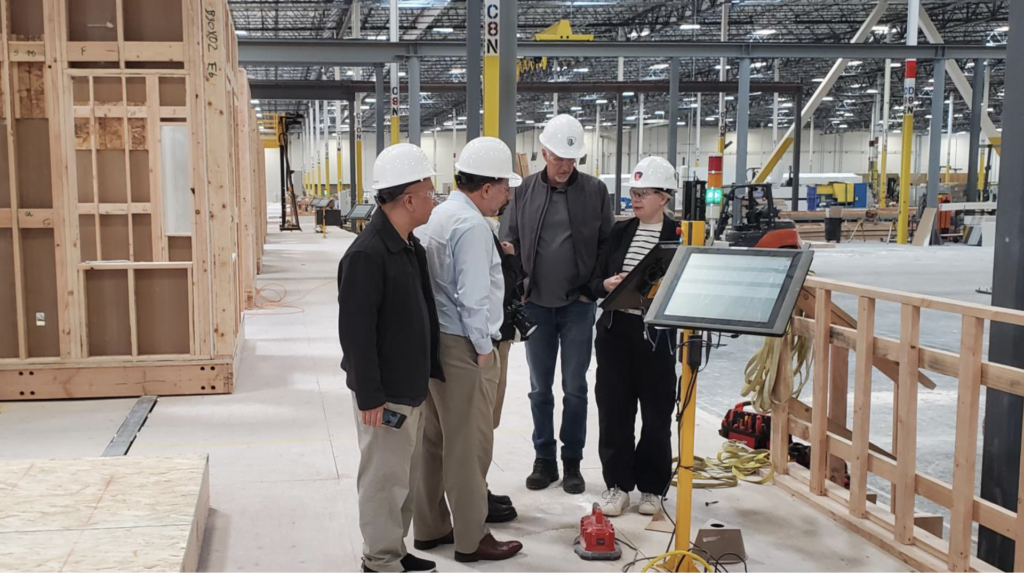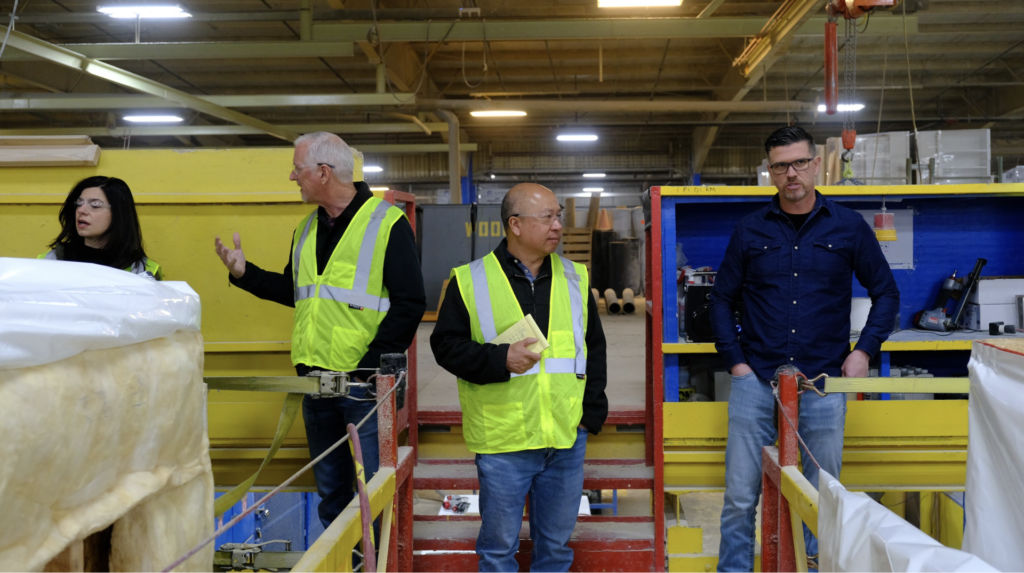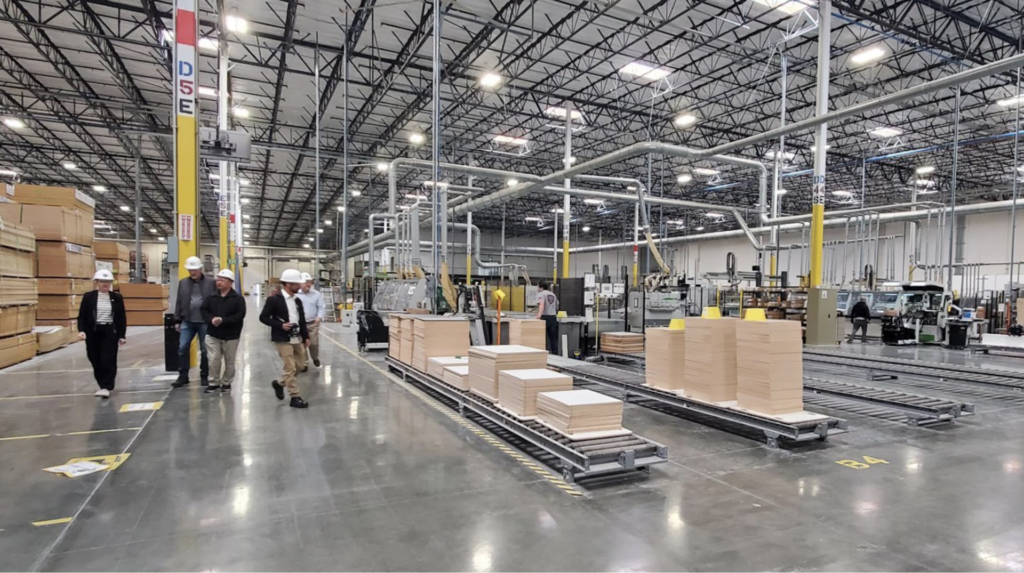Leaders & Innovators
Q&A With Nick Gomez Dir. of Modular Design and Construction at AO
March 13, 2024
In this issue of the Leaders & Innovators series Offsight CEO, Vikas Murali interviews Nick Gomez, Director of Modular Design and Construction at AO.
AO has been at the forefront of modular design and project management. The company, which has been in business for more than 50 years, successfully spearheaded and completed many commercial, multifamily and affordable housing projects, which leveraged volumetric modular construction and they have many more currently under development, These include Virginia Street Studios, The Hilton Garden Inn and Stevens Creek Promenade.
In this interview we hear how Nick and his team work closely with owners during the modular design and construction process and hear his feedback for architects looking to design for modular projects and owners assessing whether to undertake these projects. We learn how owners and GCs have adapted their thinking around modular construction on major projects and hear Nick’s feedback on what AO is doing right in the process of scaling their modular business.

V: How has GC and owner mindset changed when it comes to modular construction projects? What have you seen from your own personal experience working with owners and GCs? Have they become more receptive?
N: I think on the ownership side, I’m one of the first people factories usually point to, when approached by developers looking at modular construction. I say that there’s always been sort of this constant interest. But the people that actually follow through is a small percentage. I think it’s the owners who are really looking for a standardization that are the ones benefiting from modular projects the most.
They want to have a typical one bedroom, two bedroom, three bedroom plan or studio plan. And they’re not looking to redesign every time. That’s the perfect fit for offsite construction. You’re kind of rinsing and repeating. And also owners who are working in areas, maybe remotely where they know there’s not a huge labor pool. They’re thinking let’s get ahead of these labor constraints on these projects that are quite significant and can benefit from using off-site construction.
I’ve seen more and more developers who were quite vocal years prior, now embracing offsite construction projects.
I think the GCs once they do a project, they see the benefits of it. They’re like, oh, wait a minute, I’m taking, 65% of my scope and I’m giving it to one contractor, which is a factory. And I really don’t need as many people on site, so they’re able to have smaller crews managing the projects.
Even the local contractors, in the bay area where I’m based, were originally kind of vocally against it in the beginning when I first started doing projects. Now they’ve come around and they’ve been working on modular projects and have good relationships with the factories up here.

V: Very interesting, as a follow up to that, what was their reason for originally being against it and what changed their mindset? What did they see that convinced them, okay, maybe we should take this more seriously?
N: Education of the process of how the projects actually work. Contractors initially thought that scope was being taken away from them and given to the factory to execute.
For them, that may not always make sense, especially if they have, say, carpentry and other traders under their own business. I think in the beginning they felt like you’re taking work away from me, because you’re giving it to this factory. But in the end, when you look at how the projects play out, the factory is under the contractor and the contractor is getting a mark up on the overall project, so they’re coming out ahead.
So no, the GCs are really not losing money. You know, that scope just becomes more consolidated and that’s just how it works and increases reliability. I think in the beginning, they probably didn’t understand the process and were very skeptical because it’s new.
For them, that may not always make sense, especially if they have, say, carpentry and other traders under their own business. I think in the beginning they felt like you’re taking work away from me, because you’re giving it to this factory. But in the end, when you look at how the projects play out, the factory is under the contractor and the contractor is getting a mark up on the overall project, so they’re coming out ahead.
So no, the GCs are really not losing money. You know, that scope just becomes more consolidated and that’s just how it works and increases reliability. I think in the beginning, they probably didn’t understand the process and were very skeptical because it’s new.

V: AO obviously has a very large portfolio of modular projects, including projects you’ve completed,probably more than most other designers. What do you think that your team at AO is doing correctly when it comes to designing and managing modular projects and what advice do you have for other architects?
N: I’d say the most important thing you could do is to convince the owners to bring on the factory early. That’s something that a lot of owners need to do right. They want to get the design developed, get their budgets together and then start bidding to factories.
Our take is, if we have the factory on board first, we can actually design to the specific parameters of that factory. So we’re making the most accurate decisions on the project, not just for the factory to build, but we’re making the most efficient product for that owner’s program as well. We’re fitting it to exactly what those factory specs are and it’s important to note that every factory is slightly different. Many of our partner factories build differently and have different products, so knowing that ahead of time helps our design. We’re not having to go back after the fact and redesign, if we have that factory on board early.
Being very disciplined about the design, that’s the other thing. Knowing those limitations early and, if we don’t have a factory on board, just knowing that most factories could only ship a 72 ft box as a maximum limit lets us design with any factory as the least common denominator. In that case we’re going to make the biggest box 72 feet max, just so that everyone has the opportunity to be able to bid for it.
So, I’d say the advantage for us at AO is making sure, we can hopefully get a partner factory on board as early as possible, so you’re having an efficient design. And, if you’re not having an efficient design, making sure your project is going to be able to be bid amongst multiple factories.
Our take is, if we have the factory on board first, we can actually design to the specific parameters of that factory. So we’re making the most accurate decisions on the project, not just for the factory to build, but we’re making the most efficient product for that owner’s program as well. We’re fitting it to exactly what those factory specs are and it’s important to note that every factory is slightly different. Many of our partner factories build differently and have different products, so knowing that ahead of time helps our design. We’re not having to go back after the fact and redesign, if we have that factory on board early.
Being very disciplined about the design, that’s the other thing. Knowing those limitations early and, if we don’t have a factory on board, just knowing that most factories could only ship a 72 ft box as a maximum limit lets us design with any factory as the least common denominator. In that case we’re going to make the biggest box 72 feet max, just so that everyone has the opportunity to be able to bid for it.
So, I’d say the advantage for us at AO is making sure, we can hopefully get a partner factory on board as early as possible, so you’re having an efficient design. And, if you’re not having an efficient design, making sure your project is going to be able to be bid amongst multiple factories.
Product
650 California St, San Francisco, CA 94108
Copyright © 2024